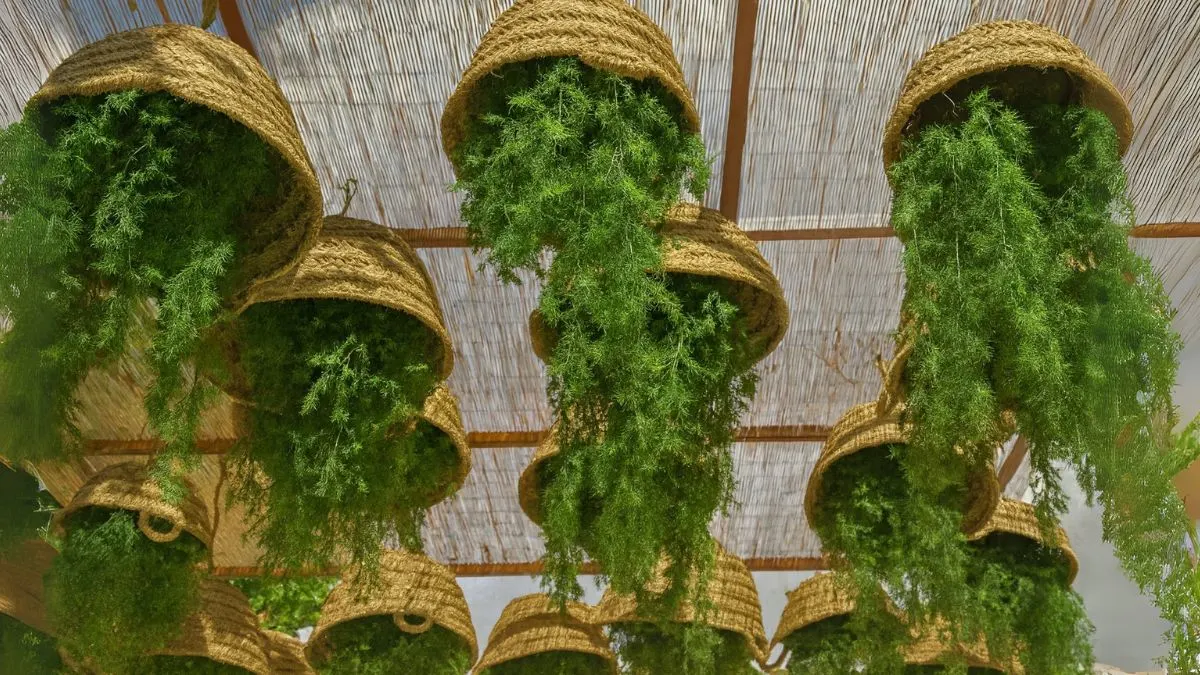Imagine walking into your kitchen and seeing tomatoes, herbs, or strawberries hanging upside down, thriving without the usual garden bed. That’s the magic of upside down gardening, a quirky yet practical approach that flips traditional gardening on its head—literally.
Whether you live in a city apartment with no yard or simply want to try something creative, this trend is becoming popular in Canada, the USA, and around the world. But is it just a fad, or can it really work? Let’s break it down.
What is Upside Down Gardening?

At its core, upside down gardening is a unique planting technique. Instead of planting seeds in the ground, you place them in containers designed to hang.
- In this system, plants grow from a suspended container, with their roots in the air and stems and foliage pointing downwards.
- The pot is hung from ceilings, balconies, or hooks.
- Gravity helps water move naturally to the roots, while the plant adjusts to grow properly.
This method was made popular by upside-down tomato planters, but it’s not limited to just tomatoes. Herbs, cucumbers, peppers, and even flowers can thrive this way.
How Does it Work?
The science is simple yet fascinating:
- The container holds soil and water.
- The seedling is inserted through a hole at the bottom, so the plant emerges downward.
- Over time, plants adapt to gravity and light, curving their stems upward for photosynthesis.
This is why you often see stems bending upwards even though they’re planted upside down.
Also Read: This Flower Blooms Even in Frost—Meet the Magical Ice Plant!
Benefits of Upside Down Gardening
1. Space-Saving Design
Perfect for balconies and small urban homes, you can grow plants in pots suspended from the ceiling without needing a traditional garden bed.
2. Fewer Pests
Pests like slugs and snails find it harder to attack plants that are hanging.
3. Better Air Circulation
Because plants hang freely, airflow is improved, reducing the chances of fungal disease.
4. Water Efficiency
Gravity helps distribute water more evenly. You won’t need as much irrigation compared to ground gardening.
Downsides to Consider
- Containers can dry out quickly in hot weather.
- Some plants may not adapt well to being upside down.
- You’ll need strong hooks and support for larger plants like tomatoes.
Still, with the right care, most of these challenges can be managed.
Best Plants for Upside Down Gardening
Not every plant is suitable, but here are some that thrive:
Plant |
Why it Works Well |
Tomatoes |
Light fruits, easy to manage upside down. |
Strawberries |
Compact and decorative. |
Herbs (basil, parsley, oregano) |
Thrive in small containers. |
Peppers |
Grow downward without much fuss. |
Cucumbers |
Small varieties adapt well. |
Ornamental Flowers |
Add visual appeal indoors or outdoors. |
Imagine combining strawberries and basil in hanging pots—you’d have fresh garnishes at arm’s reach.
Also Read: Kevda Plant Benefits: From Headaches to Holy Rituals
How to Start Your Own Upside Down Garden
Step 1: Choose the Right Container
You can buy specialized upside-down planters or make your own using a bucket with a drilled hole at the bottom.
Step 2: Pick the Right Plant
Tomatoes and peppers are beginner-friendly.
Step 3: Add Soil and Seedling
- Insert the seedling gently through the bottom hole.
- Add well-draining soil on top.
Step 4: Water and Hang
- Water regularly, as hanging containers dry out faster.
- Hang in a spot with bright, indirect light or direct sunlight depending on the plant.
Personal Experience with Upside Down Gardening
When I first tried this method, I started with cherry tomatoes. I hung a DIY bucket planter on my balcony. At first, the plant looked awkward, with its stem bending strangely. But within two weeks, it adjusted, curving toward the sunlight. By summer, I had a cascade of red tomatoes hanging like ornaments.
For anyone living in an apartment in Toronto or New York, this is not just gardening—it’s décor with benefits.
Tips for Success
- Use lightweight soil to avoid compacting the roots.
- Line the bottom hole with a coffee filter to prevent soil from falling out.
- Fertilize every two weeks since nutrients leach faster from containers.
- Don’t overcrowd—one plant per container is ideal.
Also Read: How to Grow Hyacinths That Look (and Smell) Like a Dream
Traditional Gardening vs Upside Down Gardening
Feature |
Traditional Gardening |
Upside Down Gardening |
Space Needed |
Requires yard or ground |
Perfect for small spaces |
Pest Issues |
Common |
Minimal |
Watering |
Frequent |
Moderate |
Plant Selection |
Wide |
Limited but fun |
Aesthetic Appeal |
Standard beds |
Unique hanging décor |
If you’re short on space, want a fun project, or simply love experimenting, upside down gardening is a unique planting technique worth trying. From saving space to reducing pests, the benefits far outweigh the challenges.
Don’t wait until you have the “perfect” garden setup. Grab a container, flip your gardening routine upside down, and see the magic for yourself.






